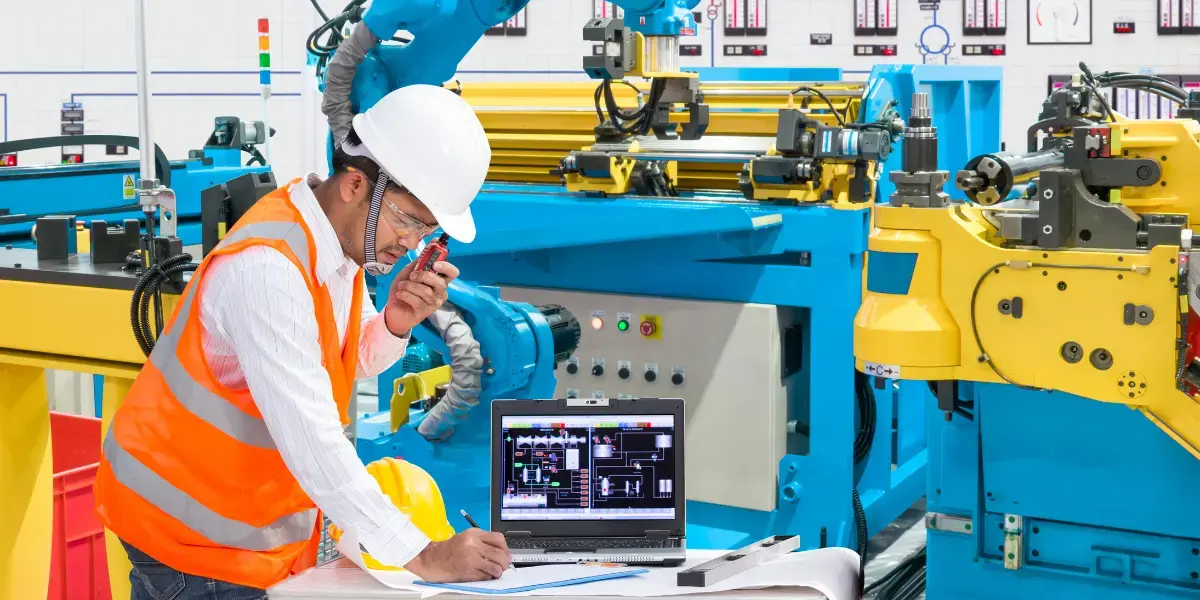Even in the Midst of Supply Chain Disruption - What Can You Do NOW to Improve Performance?
Are you feeling pressure to improve performance and production, but struggle knowing where to start? How can you ensure increased productivity with so many risks and disruptions in the way?
Well, good news! There are many tools and resources that can provide manufacturers with an increased ROI and mitigate the risk of any supply chain disruptions that are expected to continue throughout the future.
Due to the innovation that came out of necessity, the following solutions are trending in the industry to increase revenue without capital expenditures or relying on the unstable supply chain.
Let's look at some of the solutions available now.
Smart Manufacturing
Smart manufacturing solutions are nothing new, but the demand for data from plant floor systems is more critical then ever to enable real time decision making, visibility into the manufacturing floor, and the ability to close the gap in data silos.
Manufacturers want to unlock the power of data from their plant floor systems to expand capability and analytics, improve efficiency, and increase profitability. Smart Manufacturing helps solve business problems and shows an ROI to fuel future phases without implementing large capital projects.
Related: More Production with Less Capital
Predictive Maintenance Management
Predictive Maintenance will continue to replace Preventive Maintenance and the “run until it breaks” approach, since cost-effective, reliable solutions are now available in the market.
These solutions leverage proven Machine Learning (ML) algorithms and intelligent IoT and traditional sensors to reliably determine potential issues with the equipment before they impact production. The more assets that are monitored using Predictive Maintenance, the greater the accuracy in the predictions.
https://vimeo.com/625786248
Performance Management
Performance Management provides real-time, actionable insights into what is negatively impacting production throughput so that you can take measurable, corrective action.
The latest Industry 4.0 technology allows Performance Management to be deployed quickly and cost-effectively, usually providing a ROI in less than a year. Why is that? Because understanding what is negatively impacting your line throughput in real-time provides actionable data-driven insights that you can act upon to resolve the throughput constraints.
Smart sensors and agile platforms now allow all manufacturers to benefit from this solution. No longer do you have to first install a network or upgrade your PLCs before you can benefit from these insights. You can now start small, prove out the value of the insights, then expand.
Energy Management
Energy Management solutions will allow you to reduce energy usage and costs by monitoring and optimizing how and when a plant is using energy.
These solutions provide real-time, actionable insights across all of the WAGES energy utilities – Water, Air, Gas, Electricity and Steam. Identifying water and air leaks, turning off equipment when not needed, and moving energy usage to off-peak times for lower rates are just a few examples of these opportunities. Even more powerful is pulling this data into a Manufacturing Operations Management (MOM) solution that uses manufacturing information to further optimize and provide insights into energy costs associated with each product run.
Benefits of Energy Management:
• Reduced Maintenance Cost
• Extended Equipment Life
• Increased Production with Reduced Downtime

Industrial Network and Security Solutions (INSS)
Let's face it, we have all increased our support of remote connectivity in some way, shape, or form causing stress on bandwidth and security of manufacturing infrastructures. This has increased everyone's risk of cyber attacks, data breaches, and malware disruptions.
To manage a secure infrastructure, it is important to secure the infrastructure that you currently have. Manufacturers have moved away from disparate or hard-wired systems, and they have been replaced with open platforms to segment and protect the system. Currently, there are no protocols in place to address and document the procedures that occur when a security threat happens. As manufacturers follow the industry trends and move toward remote connectivity in the plant, security protocols will be implemented to ensure proper security.
Is your industrial network hardware and software capable of handling future manufacturing needs with security, scalability and stability in mind? Additionally, several network business drivers are seeded from larger data driven initiatives. These include but are not limited to:
- Ability to accurately Track Machine Utilization
- Support the use of Advanced Sensor Technologies and Enabling Predictive Maintenance
- Create connected environments – internal and external support models (remote support)
- Reduce Cost by optimizing operations through automation and inventory management
- Increase revenues through quality control
- Protect against today’s cybersecurity threats!
Related: Industrial Network and Security Solutions Site Checklist
Human Machine Interfaces (HMI)
An operator’s ability to effectively interact with an HMI directly impacts the productivity of the manufacturing system he or she is controlling. There are plenty of outdated HMI systems running manufacturing operations, many of which are several decades old. In many cases the approach is, “It works, and we’ve learned to use it, so let’s not touch it.”
Hardware and software obsolescence and cybersecurity concerns usually are triggers to initiate HMI upgrades with added benefits of leveraging newer technology. No one wants to use a flip phone when a smart phone is available!
Two key concepts exist for upgrading legacy HMIs:
- Keep the design the same but move it to a newer hardware and software.
- Re-design the HMI to address known issues and leverage better designs and latest technology.
Using the flip-phone versus smartphone analogy, we can easily see that the former approach leaves untapped opportunity. It should also be noted that most manufacturers now have different environments and workforce dynamics then when these HMIs were initially deployed.
The latest generation of workers has grown up with mobile devices, an application-based solution methodology (“There’s an app for that!”), and omnipresent access to the internet to quickly find a solution. Today’s manufacturing environment demands a leaner workforce, higher machine and system efficiencies, greater flexibility, and increased productivity and quality targets, which requires higher HMI performance to support these demands.

Polytron HMI Sample
Simulation and Emulation
While there is no crystal ball to predict the exact outcome of a project, there is proven technology that delivers valuable insight into programming, line design, equipment, and overall line performance to increase productivity and performance.
An emulation model is a virtual clone or “digital twin” of your process, batch production system, or packaging line. Emulation removes the guesswork and delivers an efficient real time approach for confident outcomes. It directs your PLC to handle real-time scenarios as if they are happening on the factory floor. The emulation software lets you test control systems at various speeds and production levels, without moving physical product through the actual production line. Emulation is the only way to dynamically check the code in advance of implementation.

Polytron Simulation Example
Unlike emulation, simulation cannot validate that the PLC code has the capacity to handle the dynamics and nuances of a real operating system using every possible running scenario. Running a real-time computer model of the system is actually more effective than running the system itself in the field. Because simulation/emulation has the capacity to address variables and yield more useful data in a shorter period of time, your engineering team can run and test various “what if” scenarios without impacting production.
In manufacturing, the key to success is to manage risk and eliminate the unknown to the highest degree possible. Simulation and emulation can help you expand and make major changes and decisions without the stress and risk that comes with guesswork.
Related: Digital Twin Gives Clarity to Bottling Line Issues and Doubles OEE Output
Do you need to increase your product productivity and performance ASAP? Contact us to find out what solutions you can implement NOW without delays.


